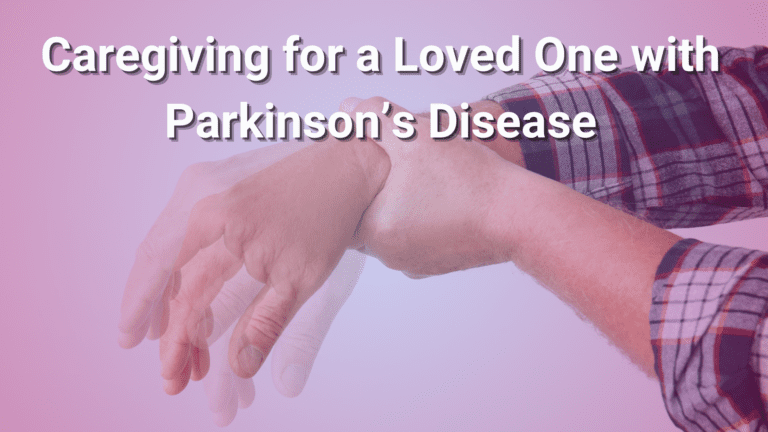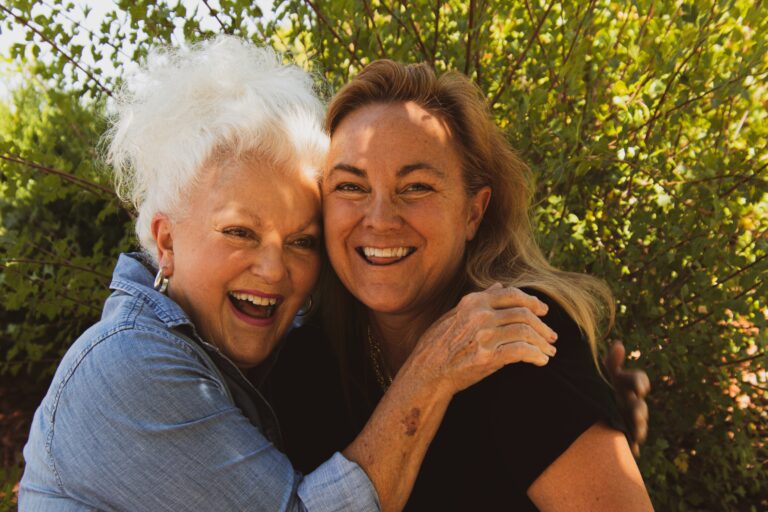Caring for someone with Parkinson’s is a journey filled with twists and turns. Every day brings different challenges, but also new ways to connect with your loved one in impactful ways. Parkinson’s disease is a progressive condition that can make even simple tasks feel like mountains to climb. But you’re right there, helping to smooth the path. From managing symptoms to providing comfort and finding joy in the little moments, you are the anchor in this journey. Let’s try to develop an understanding of the disease, while preparing for the road ahead, nurturing your relationship, caring for yourself, keeping your loved one active, managing medical care, and facing challenges head-on.
Understanding Parkinson’s Disease and Its Progression
Symptoms and Stages of Parkinson’s
Parkinson’s disease (PD) is a progressive disorder, meaning it changes over time. People with Parkinson’s can develop different symptoms as the disease advances. These symptoms can be both motor-control related, like tremors and stiffness, and non-motor, such as depression and sleep problems. The Hoehn and Yahr scale is often used in clinical settings to assess the progression of Parkinson’s disease and to help in tailoring treatment plans. It provides a quick snapshot of the severity of the disease but doesn’t account for all symptoms, particularly non-motor symptoms such as cognitive decline, sleep disturbances, or mood disorders.
The Five Stages of the Hoehn and Yahr Scale:
- Stage 1: Mild Symptoms
- Symptoms: In the initial stage, symptoms are generally mild and typically affect only one side of the body. This might include slight tremors, stiffness, or subtle changes in posture, walking, or facial expressions.
- Impact: These symptoms might be so minor that they don’t significantly interfere with daily life. Often, they’re noticeable only to the person affected or those close to them.
- Stage 2: Symptoms on Both Sides
- Symptoms: At this stage, symptoms start to affect both sides of the body. While tremors, rigidity, and other motor symptoms are more noticeable, balance isn’t yet impaired.
- Impact: The person might begin to experience more difficulty with daily tasks, such as walking or maintaining good posture, but they can still live independently.
- Stage 3: Balance Impairment
- Symptoms: By stage 3, balance becomes an issue. Reflexes slow down, making falls more likely. Movements are noticeably slower, and there is increased difficulty with tasks that require coordination.
- Impact: Daily activities, like dressing or eating, become more challenging, and the person may require some help with tasks. However, many can still maintain a level of independence.
- Stage 4: Severe Disability
- Symptoms: Symptoms are severe and highly disabling. While the person may still be able to stand or walk unassisted, their movement is significantly impaired, and they may require assistance with most daily activities.
- Impact: At this point, living independently becomes very difficult, and help is often needed for even the simplest of tasks. A walker or other mobility aids may be necessary.
- Stage 5: Wheelchair-Bound or Bedridden
- Symptoms: In the final stage, the person may no longer be able to stand or walk and is typically confined to a wheelchair or bed. They may also experience non-motor symptoms such as cognitive impairment or hallucinations.
- Impact: Full-time care is required, as the person can no longer live independently. This stage is characterized by severe disability and a significant reduction in quality of life.
How Parkinson’s Affects Daily Life
As Parkinson’s progresses, the everyday routines that once were effortless can become increasingly challenging. Someone who used to cherish dining out, who loved good food and even better company, might hesitate before accepting an invitation to go out because their hands might begin to tremble, making something as simple as holding a fork feel difficult. The embarrassment of spilling food or drawing unwanted attention can overshadow the joy of dining out.
Similarly, consider a person who was known for their quick wit and engaging conversation. They may now find their speech slowing down, their voice becoming softer, almost as if their thoughts are trapped inside. Conversations that once flowed freely can become frustrating for both them and those around them as they struggle to be heard and understood.
These changes, though difficult, aren’t the end of enjoying these activities—they just require a different approach. For the person who loves dining out, choosing quieter, more intimate settings can help them feel more comfortable. Dining at times when restaurants are less crowded or opting for takeout from favorite spots can allow them to enjoy the food they love without the pressure of a public setting. For the former conversationalist, patience from friends and family, paired with a supportive environment, can make all the difference. Using communication aids, such as writing or technology, can help them stay engaged in conversations.
The key is recognizing these challenges as they arise and finding ways to adapt, allowing your loved one to continue participating in the activities that bring them joy. It’s not about giving up on what they love; it’s about finding new ways to experience it together. With creativity and compassion, you can help them navigate these changes, ensuring they continue to lead a fulfilling life despite Parkinson’s.
The Importance of Early Diagnosis
Early diagnosis of Parkinson’s is crucial. It allows for better management of symptoms and can improve the quality of life for your loved one. While medications and surgery can provide significant relief, they do not stop the progression of the disease. Recognizing the signs early on can help in seeking timely treatment and planning for the future.
“Parkinson’s is a journey that evolves over time. Your role as a caregiver will also change, requiring you to adapt and find new ways to support your loved one.”
Preparing for the Caregiving Journey
When you first learn that a loved one has Parkinson’s, it can feel overwhelming. Educating yourself about Parkinson’s is the first step. Understanding the symptoms and stages helps you know what to expect and how to manage daily challenges. There are many resources available to help you get practical tips and resources for caring for someone with Parkinson’s.
Educating Yourself About Parkinson’s
Start by reading books, joining support groups, and talking to healthcare professionals. There are also some incredible community educators. The more you know, the better you can help your loved one. It’s also important to stay updated on new treatments and therapies.
View this post on Instagram
Setting Up a Care Plan
Creating a care plan is essential. This plan should include daily routines, medication management, and emergency procedures and contacts. Involve your loved one in this process to ensure their needs and preferences are met. A well-thought-out plan can make caregiving more manageable and less stressful.
Legal and Financial Considerations
Don’t forget to address legal and financial matters. This includes setting up power of attorney, managing finances, and understanding insurance coverage. Planning ahead can prevent many future headaches and ensure that your loved one’s wishes are respected.
Maintaining a Strong Relationship with Your Loved One
Effective Communication Strategies
When caring for someone with Parkinson’s, open and honest communication is key. It’s important to talk about your feelings and listen to theirs. Sometimes, just being there to listen can make a big difference. Use simple words and short sentences to make sure you both understand each other. Don’t forget to talk about things other than caregiving to keep your relationship balanced.
Balancing Independence and Support
Finding the right balance between helping and letting your loved one do things on their own can be tricky. Encourage them to do what they can, but be ready to step in when needed. As I like to remind my team of caregivers, try to do “with” our clients, not “for” our clients. This helps them feel more independent and confident. Remember, it’s okay to ask for help from others to make sure you’re not overwhelmed.
Dealing with Emotional Changes
Parkinson’s can bring a lot of emotional ups and downs. Your loved one might feel sad, angry, or frustrated. It’s important to be patient and understanding. Let them know it’s okay to feel this way and that you’re there for them. Sometimes, just a hug or a kind word can make a big difference.
Self-Care for the Caregiver
As a caregiver, it’s crucial to remember that you can only provide compassionate care to your loved one if you care for yourself as well. Recognizing your own needs and taking time for self-care isn’t selfish—it’s necessary. Here are some ways to ensure you stay healthy and balanced while caregiving.
Recognizing Caregiver Burnout
Caregiving can be exhausting, both physically and emotionally. It’s important to identify the signs of burnout early. These might include feeling constantly tired, getting sick more often, or feeling overwhelmed. Taking breaks and asking for help when needed can make a big difference.
Finding Time for Yourself
Balancing caregiving with personal time is essential. Schedule regular breaks and make time for activities you enjoy. Whether it’s reading a book, going for a walk, or spending time with friends, these moments can recharge your energy and spirit.
Seeking Support from Others
Joining a support group for caregivers can provide a sense of community and understanding. Sharing experiences and advice with others in similar situations can be incredibly comforting. Don’t hesitate to reach out to friends and family for support, too. They can offer a listening ear or even help with caregiving tasks.
Remember, taking care of yourself is not a luxury—it’s a necessity. By maintaining your own well-being, you can be a more effective and compassionate caregiver for your loved one.
Encouraging Activity and Engagement
Physical Activities for Parkinson’s Patients
Staying active is crucial for those with Parkinson’s. Simple exercises like walking, stretching, or even dancing can make a big difference. Regular physical activity helps maintain mobility and balance. You might also consider activities like yoga or tai chi, which are gentle on the body but effective in improving flexibility and strength.
Mental Stimulation and Cognitive Exercises
Keeping the mind sharp is just as important as physical health. Puzzles, reading, or learning a new skill can be great ways to engage the brain. Encourage your loved one to participate in activities that challenge their mind and keep them engaged. This not only helps with cognitive function but also provides a sense of accomplishment.
Social Interaction and Community Involvement
Maintaining social connections is essential for emotional well-being. Plan activities with family and friends, or join local clubs and groups. Staying connected with others can help reduce feelings of isolation and provide much-needed support. It’s important to talk about things other than caregiving to keep the relationship balanced and healthy.
Managing Medical and Daily Care
Medication Management
Ensuring that medications are taken on time is crucial. If your loved one is forgetting their medicine, they may not be functioning as well as possible. Be sure medications are taken as prescribed to maintain their health. You can use pill organizers or set alarms to help with this task.
Coordinating with Healthcare Providers
When you and your care partner attend appointments together, you both hear what the doctor has to say. This way, you can compare notes afterward and discuss management options. Keeping track of all the details associated with medical care can be overwhelming, so don’t hesitate to ask questions at doctor visits.
Daily Living Aids and Adaptations
Activities of daily living (ADLs) can become challenging for someone with Parkinson’s. Consider using adaptive equipment to make tasks easier. For example, adaptive utensils can help with eating, and grab bars can assist with bathing. These small changes can make a big difference in maintaining independence.
Navigating Challenges and Finding Solutions
Caring for a loved one with Parkinson’s can be tough, especially when symptoms change without warning. Handling unpredictable symptoms requires patience and quick thinking. Sometimes, you might need to adjust plans on the fly or find new ways to help your loved one feel comfortable.
Coping with Behavioral Changes
Behavioral changes can be one of the hardest parts of caregiving. Your loved one might experience mood swings, depression, or anxiety. It’s important to stay calm and supportive. Try to understand what they are going through and offer reassurance. If things get too hard, don’t hesitate to seek help from a professional.
Problem-Solving and Adaptability
Being adaptable is key. You might face new challenges every day, from movement issues to meal times. Here are some tips to help you stay flexible:
• Stay informed: Keep learning about Parkinson’s and its progression.
• Be creative: Find new ways to solve problems as they arise.
• Ask for help: Don’t be afraid to reach out to others for support.
Discover essential caregiving tips for later-stage Parkinson’s patients. Navigate movement challenges, falls, mealtimes, and caregiver burnout with expert advice.
Remember, you’re not alone on this journey. There are many resources and people ready to help you and your loved one.
Encouraging Research Into Parkinson’s Disease
Recent research in Parkinson’s disease has yielded several promising developments. One of the most significant breakthroughs is the discovery of a new biomarker called α-synuclein seeding amplification assay (αSyn-SAA), which can detect abnormal alpha-synuclein in spinal fluid with 93% accuracy. This tool could revolutionize early diagnosis and treatment monitoring. Additionally, stem cell therapy is emerging as a potential game-changer, with studies showing improved motor function and protection of dopamine-producing neurons. Genetic research is also advancing rapidly, with initiatives like PD GENEration offering free genetic testing to identify candidates for gene-targeted clinical trials. Furthermore, deep brain stimulation continues to show promise as an advanced treatment option for managing Parkinson’s symptoms when medications become less effective. These developments, along with ongoing research into neuroprotective therapies, offer hope for improved management and potential breakthroughs in Parkinson’s treatment.
Caring for a loved one with Parkinson’s disease is a journey filled with both challenges and rewards. It’s important to remember that you are not alone in this journey. By preparing yourself, seeking help, and maintaining a strong relationship with your loved one, you can navigate the ups and downs more effectively. Encourage your loved one to stay active and engaged, and don’t forget to take care of yourself as well. Balancing your needs with those of your loved one is key to providing the best care possible. Remember, every small step you take makes a big difference in the quality of life for both you and your loved one.

From a young age, Stacey’s link to the senior care industry grew alongside her mother’s work at a nursing home, where she often accompanied her. By her early teens, she secured her first official job at a nursing home, laying the foundation for a profound journey in senior care spanning over four decades. Her roles varied from opening assisted living and memory care residences to working in nursing homes and independent senior living communities. As the former Director of Fun for 300 independent seniors, she expertly organized daily events and trips. Stacey’s unwavering passion, nurtured by her family, and professional dedication as a recreation therapist, reflect her deep commitment to preserving the dignity and well-being of seniors.
Stacey’s senior care expertise has been recognized by the media including U.S. News and World Report and Care.com.
Stacey and her husband Bryan are the owners of the senior in-home care agency A Place At Home – North Austin.




